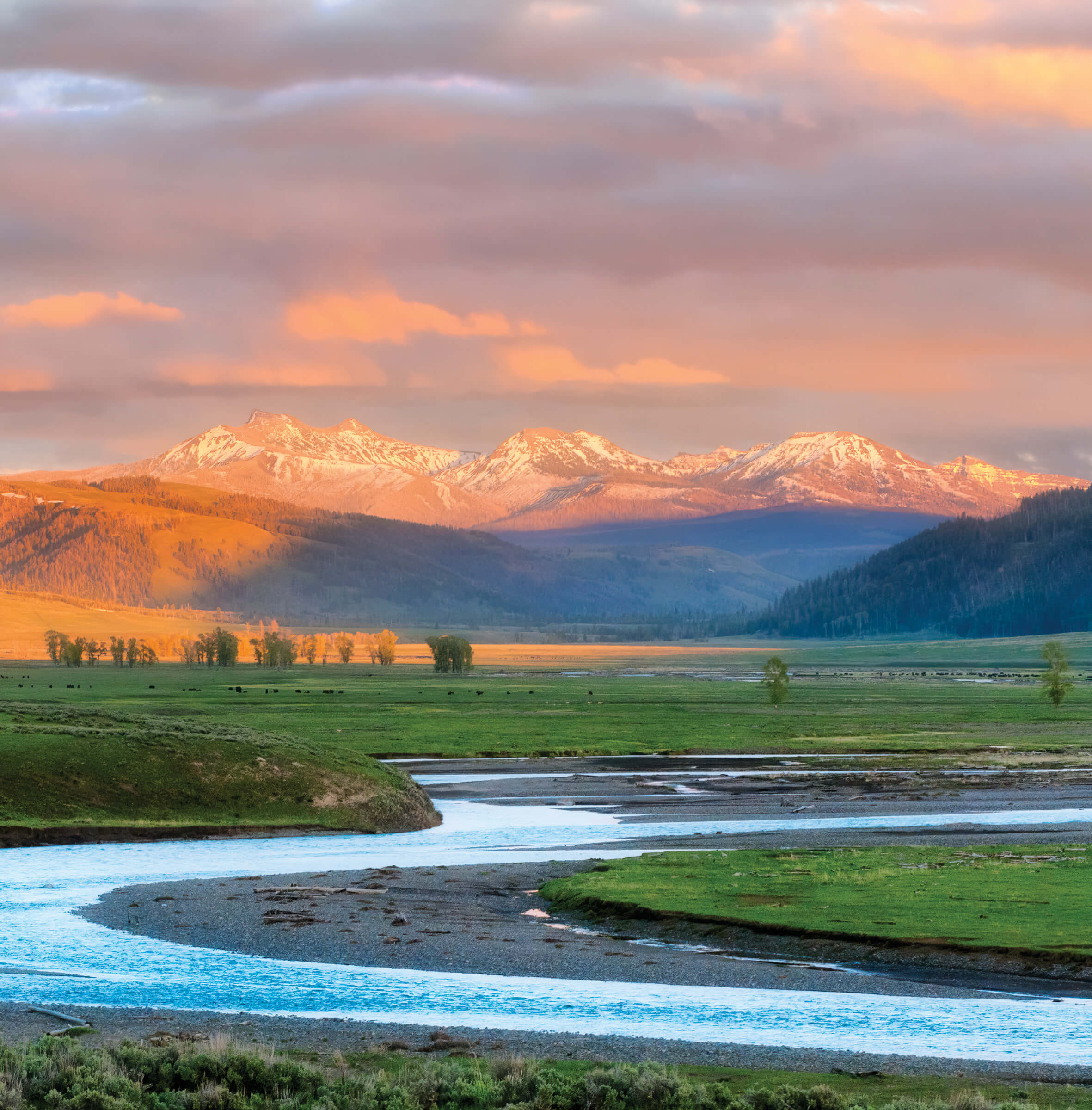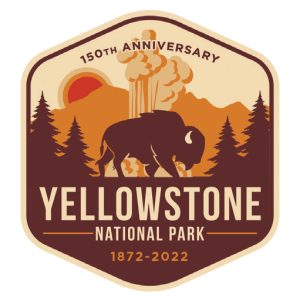
01 Jun Round Up: 150 Years of Yellowstone
Yellowstone National Park celebrates its 150th anniversary this year. Designated as the country’s first national park on March 1, 1872, the landscape it encompasses has a rich ecological and human history, with archaeological evidence and oral traditions dating the presence of various tribes and bands in the park back more than 11,000 years.
As a historical convergence point of Great Plains, Great Basin, and Columbia Plateau Indians, Yellowstone is a place of significant cultural heritage for a range of Indigenous peoples who regularly lived in, and traveled through, the area. Thousands of years before the park was established, its land and resources were hunted, fished, foraged, and quarried by the ancestors of modern-day Blackfeet, Cayuse, Coeur d’Alene, Shoshone, and Nez Perce tribes, among others. Yellowstone’s unique thermal features, plant life, and minerals were important to many of these populations, both medicinally and ceremonially. At the time, the Crow were generally found east of Yellowstone; the Umatilla to the north; the Shoshone and Bannock (among others) to the west; and the Blackfeet to the west and south.

The Greater Yellowstone Ecosystem has experienced unique geological activities for the past 150 million years. Yellowstone lies on top of a supervolcano, and each of its major eruptions has helped shape the majestic splendor and hydrothermal wonders that define it today. Among other incredible features, Yellowstone has one of the largest known calderas (the result of one of the biggest volcanic eruptions ever), more than 10,000 hydrothermal features (including the greatest concentration of active geysers in the world), and petrified trees created by volcanic activity that occurred more than 45 million years.
Yellowstone is also home to a substantial number of animal species. It boasts the largest concentration of mammals in the lower 48 states, including eight ungulate species (bighorn sheep, bison, elk, moose, mountain goats, mule deer, pronghorn, and white-tailed deer), and seven large predators (black bears, Canada lynx, coyotes, grizzly bears, mountain lions, wolverines, and wolves).
As park visitation continues to break records season after season, Yellowstone managers study the past to better understand humans’ interactions with the landscape. The overall goal is to mitigate the impacts of modern activities in order to preserve and protect the natural and cultural resources of the country’s oldest national park.
— Jessica Byerly
150th Anniversary Celebrations
May – September
Tribal Heritage Center
In partnership with the nonprofit Yellowstone Forever, a newly established Tribal Heritage Center in the Haynes Photo Shop at Old Faithful will serve as a public forum, where Native American artists, scholars, and presenters can educate visitors about the Tribal Nations’ visions for their presence in the park, now and into the future.
July – August
Teepee Village
Working with numerous Tribal Nations and nonprofit organizations, a family-friendly teepee village is being built around Roosevelt Arch at the park’s North Entrance. Here, visitors can interact with Tribal members and learn about their heritage and culture.
July 27 – 31
Nez Perce Appaloosa Horse Club Ride & Parade
In Canyon Village, members of the Nez Perce Appaloosa Horse Club will ride a section of the Nez Perce Trail and offer a horse parade, trail rides, and fireside chats celebrating the history and culture of the NiMiiPuu (Nez Perce).
August
Yellowstone Historic Vehicles Display
A portion of Yellowstone’s historic vehicle collection, one of the largest in the National Park Service, will be on display at Old Faithful to showcase the evolution of park travel over the past 150 years.
Timeline of Yellowstone History
- 11,000+ years ago: A Clovis point was made from obsidian obtained at Obsidian Cliff.
- 10,000 years ago: The Folsom people were mainly centered around Yellowstone Lake.
- 8,000–1,500 years ago: The Tududika set up camps around Yellowstone Lake, and many other tribes and bands lived in, and traveled through, the area.
- 3,000 years ago: Salish oral histories and artifacts link tribal ancestors to Yellowstone.
- 500–1700s: Oral histories link Kiowa and Lakota Sioux (and possibly Crow) ancestors to Yellowstone.
- Late-1700s–1840s: Fur traders navigated rivers, European Americans explored the area, and tribes started using horses.
- 1869: The Folsom-Cook-Peterson expedition is the first to explore the Yellowstone region.
- 1870: The Washburn-Langford-Doane expedition names Old Faithful.
- 1871: The first Hayden expedition takes place.
- 1872: Yellowstone National Park is established.
- 1883: The Northern Pacific Railroad arrives, easing access for visitors.
- 1886-1918: The U.S. Army manages the park.
- 1903: President Theodore Roosevelt dedicates the North Entrance arch.
- 1915: Private automobiles gain access.
- 1916: The National Park Service is established.
- 1929: President Herbert Hoover expands park boundaries (and does so again in 1932).
- 1948: Visitation hits one million.
- 1971: Winter lodging opens.
- 1975: The grizzly is listed as a threatened species.
- 1995: Wolves are reintroduced.
- 2021: The park hosts 4,860,537 visitors, up 28 percent from 2020, making it the busiest year on record.



No Comments